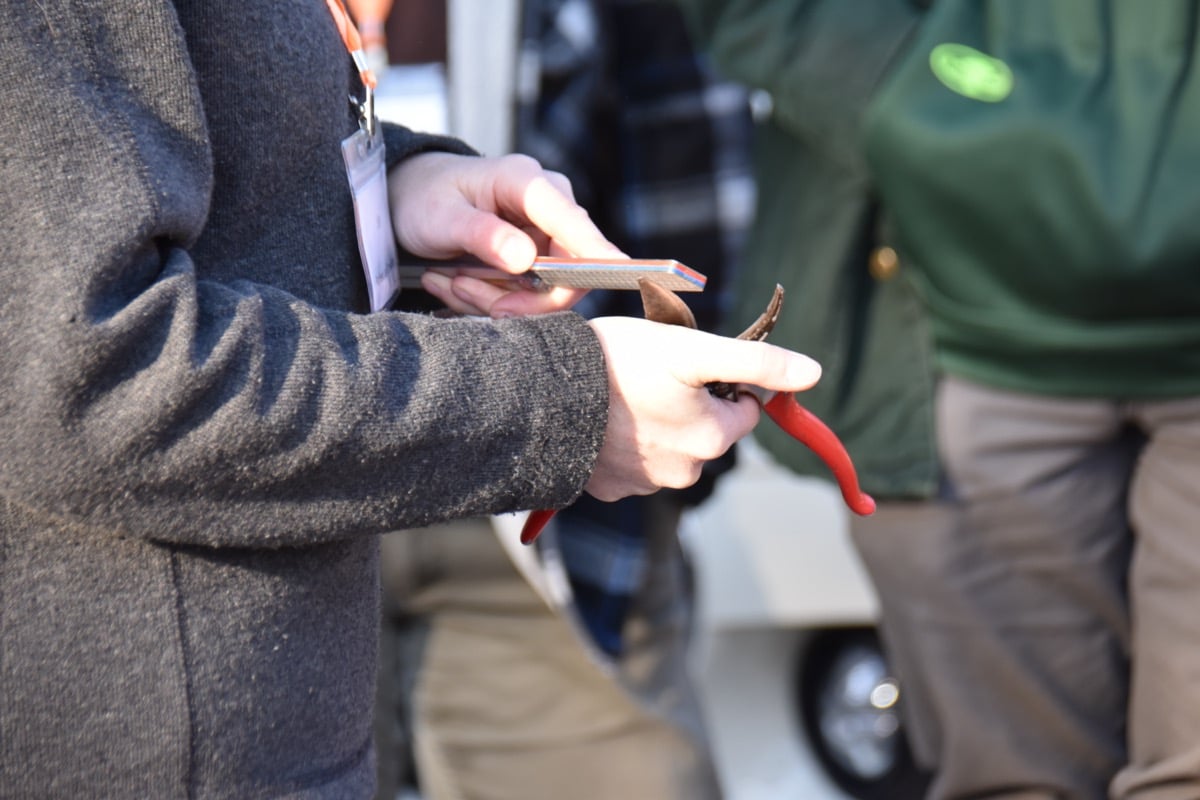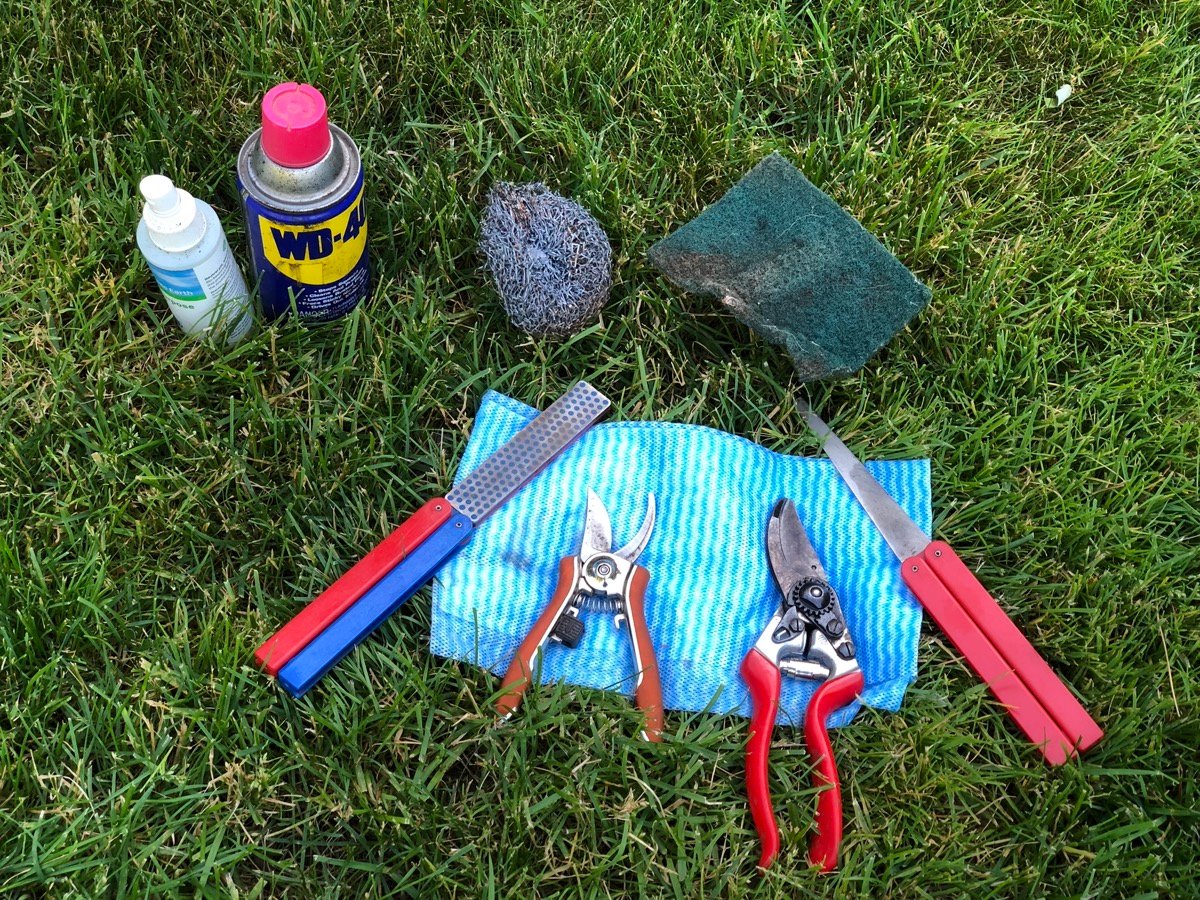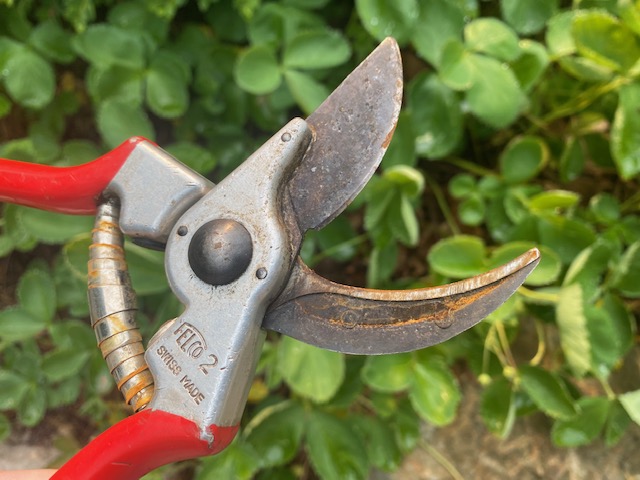For those of us who ditched our tools in the shed and walked away last fall there’s likely more than a little dried soil and rust stuck to the blades. Both professionals and amateurs tend to feel exhausted at the end of a long growing season. Hightailing it inside to warm up and rest weary muscles sounds so much better than cleaning tools! So, if that was the case for you, now is the time to take the proper precautions to ensure your tools are clean and in good working order to keep plants and gardens healthy and beautiful.
Clean Tools, Happy Garden
Cleaning gardening tools can prevent rust, keep edges sharper, and remove pathogens. If you already cleaned and sharpened in the fall - I’m impressed! Just give your tools a quick wipe down with disinfectant. For the rest of us, grab a hose, a wire brush, a putty knife and some steel wool.
Spray your tools down with the hose first. Scrub away any remaining dirt until the surface is clean before disinfecting. If there’s still stubborn grime caked on the blade, use a putty knife to scrape it off. And, if there’s rust, give those areas a good rub with steel wool. Finally, remove any sap with GooGone or lighter fluid.
Now that your tools look clean, it’s time to disinfect to eliminate any bacteria, fungus or viruses that are still hoping to hitch a ride. You’ll want to disinfect at the beginning of the season and immediately after your tools come into contact with a diseased plant.
A bleach solution or rubbing alcohol works well. For bleach, mix 1 part bleach to 9 parts water. For rubbing alcohol, use a solution that is at least 70% alcohol. Soak the tools in the solution for five minutes. After soaking, rinse and dry your tools thoroughly. Make sure to store them in a dry place. For a store bought alternative, Clorox wipes can do the trick.
Make it Easy
Tool maintenance is like anything else in life. If you make it convenient, you’re more likely to build good habits.
Many people set up cleaning buckets by their sheds or garages. You can make your own by mixing one bucket of sand and one cup of vegetable oil. Simply dip your tools in the bucket when you’re done using them for the day to remove dirt and protect the finish.
Keep disinfectant wipes or your disinfectant solution and rags handy to remove sap, bacteria or fungus from your shears so you don’t spread anything from plant to plant. Keep in mind homemade solutions will lose their potency after a day, so never mix more than you think you’ll need.

Pruning Training with Jen Kettell of Radiant Leaf Consulting
Get An Edge And Sharpen Your Gardening Game
Any tool with an edge should be sharpened periodically throughout the season. Sharpening will make your gardening tasks more efficient, protect the health of your plants and increase the longevity of your tools.
Dull tools tend to require more effort and can damage plants by tearing tissue rather than making clean cuts. Jagged cuts are more susceptible to disease. Sharp tools, on the other hand, make clean cuts that heal faster and reduce the chances of damage.
If you’ve ever used a dull pair of shears before, you know how much extra force you have to exert in order to cut through a branch. Extra force can bend and break your tools, cutting their life short. Rather than performing simple preventative maintenance, many gardeners shy away from sharpening, but as any YouTube video on sharpening tools can attest, it’s quick, easy and well worth it. The trick is to go slow and to follow the factory bevels.
To start, wipe down the blade with WD-40 and make sure the tool is free from dirt. The type of file you use will depend on what you are sharpening. A hand pruner can be sharpened with a smaller file, like a Carbide multipurpose sharpener, while a shovel is best suited for a ten-inch mill file.
If you’re sharpening a shovel, sharpen only the inside edge. Sharpening both sides will reduce effectiveness and stability. Careful not to take off too much metal. And, after sharpening, oil the blade to prevent rust.
Well loved pruners should only need sharpening every six weeks. And for gardeners who only spend a few hours a week pruning, one good sharpening a year may be enough.

Gear to keep hand tools in great shape
Reviving Your Garden Tools in Three Easy Steps:
- To sharpen your shears, place your sharpening tool on the blade.
- Hold your shears with the blade pointing away from you. Match the angle of the tool with the angle of the bevel.
- Draw the tool from the back to the front of the blade. All it takes is 4 or 5 strokes and you’ll notice your tool will begin to shine. Repeat the steps on the other side and as a final step, wipe down the blade with machine oil.
A good tip for following the bevel is to color the edge with a marker and file until the color has disappeared.
Other Helpful Tips
If your tools have wooden handles, the wood will eventually begin to dry, split and cause splinters. Once or twice a year, sand the handles to remove rough spots and rub them with linseed oil. The oil adds a protective barrier. If it’s beyond repair, most wooden handles can be replaced.
Even if you know you’ll be using your tools the next day, it’s always best to store them inside and out of the elements. After cleaning them, return them to your shed or garage where they will stay dry and rust free.
Whether your tools are brand new or heirlooms, some maintenance and TLC can help them work better and last for a lifetime.
If you are interested in regenerative gardening, please download our eBook: How Regenerative Gardening will help Fight Climate Change.






Leave a comment